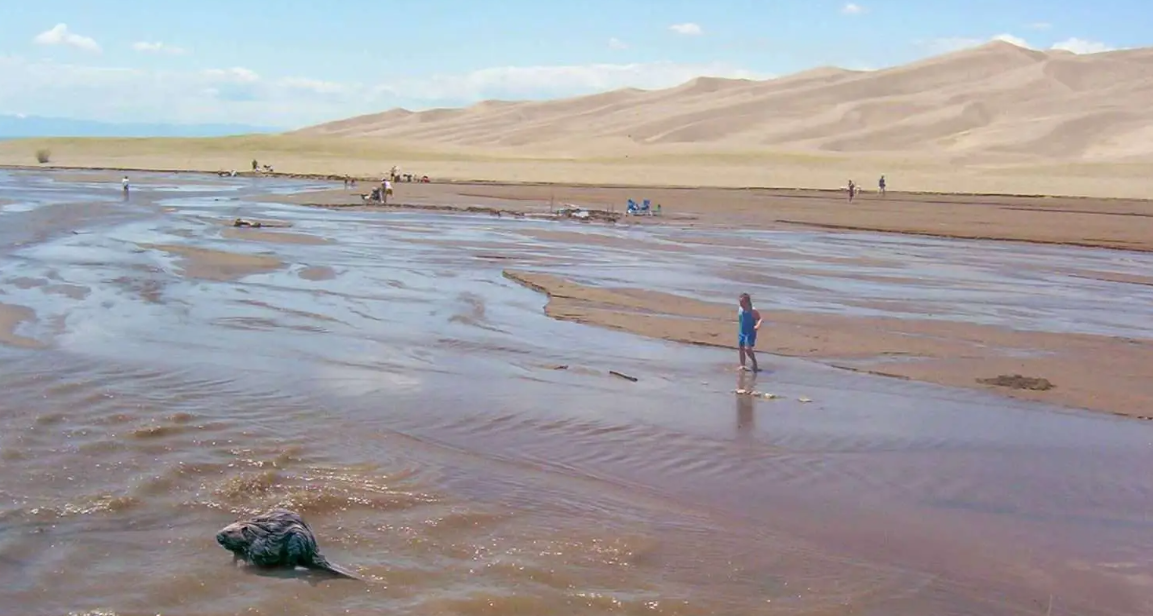Did you know that Great Sand Dunes National Park was in Colorado? And did you know it wants beavers?
Beavers in the SLV: Why you should start giving a dam about this keystone species
 Due to a history of hunting and habitat loss, beaver colonies have diminished across the San Luis Valley in the last few centuries. Though beaver populations are stable in parts of the Valley, efforts are underway to restore he species to key waterways that they once occupied. Beavers play a major role in maintaining ecological balance, protecting endangered fish and mitigating the impacts of wildfire.
Due to a history of hunting and habitat loss, beaver colonies have diminished across the San Luis Valley in the last few centuries. Though beaver populations are stable in parts of the Valley, efforts are underway to restore he species to key waterways that they once occupied. Beavers play a major role in maintaining ecological balance, protecting endangered fish and mitigating the impacts of wildfire.
It takes a beaver approximately 24 hours to completely re-engineer an ecosystem. These stout, orange-toothed rodents use sticks, mud, leaves and grasses to build watertight dams that slow and redirect water across a landscape, creating lush wetland habitats. Their dams assist in water purification, groundwater recharge, enhance the capacity of soil to sequester carbon and hydrate the surrounding land, making it more drought resilient. Beaver dams also create habitat for insects, fish, birds, small animals and vegetation, increasing ecosystem biodiversity and productivity.
Beavers play a critical role in mitigating the impacts of wildfire as well. Peter May, a 30-plus year firefighter and Crestone resident, believes that supporting local beaver colonies is key to protecting parts of the SLV against wildfires. “Beavers are water stewards; they rehydrate the forests…We need them so that when a wildfire does occur here, it can tend to be more limited as the landscape becomes more hydrated,” explained May.
I can’t help but worry about beavers in a Sand Dunes park. What do they eat? Maybe there’s dessert willow around, I don’t know.
May’s stance on beavers is echoed by a mounting body of scientific research. In a 2020 study of wildfires across the Western USA, including Colorado, ecohydrologists Dr. Emily Fairfax and Andrew Whittle found that riparian areas without beaver colonies were three times more affected by wildfire than riparian areas with beavers.
In parts of the SLV, beavers could have the same protective effect against wildfires, though there is concern that local beaver populations have yet to recover from centuries of ruthless hunting and trapping. “Beavers are still here but they are not what they used to be…Anyone who hikes up to Willow Lake knows that beavers are not there, but they could be,” May shared. Working with a small team under the name E3KFM, May aims to revive beaver populations to sustainable and effective numbers, where appropriate and, in turn, rehydrate local forests and increase biodiversity.
In 2012, May initiated a survey with help from Colorado College to assess the presence of beavers around Crestone, from North Crestone Creek to Sand Creek. The results indicated that beavers occupied Spanish, Cottonwood, Sand Creek, Deadman and Willow Creeks. Shockingly, May’s most recent survey is preliminarily showing that beavers along these waterways have all vanished except for at high elevations along Sand Creek and possibly Deadman Creek.
The Colorado Beaver Summit was inspired by the California Beaver Summit which was inspired by the New Mexico Beaver Summit which in turn encouraged the Midwest beaver Summit. Good news does travel.]
The Great Sand Dunes National Park and Preserve is also home to a stable population of beavers. “As a native species with a keystone role in our riparian systems, we are very interested in the wellbeing of beaver populations,” said Great Sand Dunes Biologist, Dewane Mosher. Mosher explained that beavers occupy the Medano Creek and Hudson Branch areas of the Great Sand Dunes. “We don’t have a formal population estimate,” Mosher commented, “but beavers fully occupy about 12 stream miles of year-round habitat,” including a fully occupied population on Medano Creek. “The beavers are a positive influence on native fish populations due to the diversity of habitats their presence promotes,” Mosher added.
For example, one of the healthiest populations of Rio Grande Cutthroat Trout, a candidate species under the Endangered Species Act (ESA), is found in Medano Creek. Ponds fed by beaver activity also provide vital spawning and nursery areas for Rio Grande Suckers, a State Endangered fish and candidate species under the ESA.
Mosher identified the Sand Creek drainage as once hosting beaver colonies, but after a large flood event 10 years ago, the creek has since been unoccupied. He is optimistic that beavers will reoccupy the creek from neighboring populations in the future. “Beaver populations are cyclical and fluctuate naturally due to changes in the habitat that are often caused by the beavers themselves,” explained Mosher. However, if natural reoccupation doesn’t occur, the Great Sand Dunes is open to a re-introductory plan along the drainage.






































